December, 1969
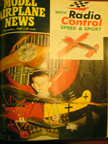
Model Airplane News Cover for December, 1969
Fokker D. VIII
Click to Enlarge
Here is what the blurb about the cover has to say:
"... We coould best describe the cover as "the old and the new" -- unfortunately, this is not completely accurate as both subjects are old: an original full-size Spad S. XIII and the [Fokker D. VII] model while new still represents the old World War One fighter in good free-flight scale. Construction details are found in this issue ..."
About the Model
This is a fine scale model built at 1.5" = 1' of the famous Fokker D. VII fighter, the scourge of the air for a short moment in 1916. Plans are adapted from drawings made for MAN by Joseph Nieto and cockpit details were taken from Smithsonian Institution photos. You may read about this model by clicking to enlarge the photos below:
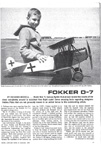
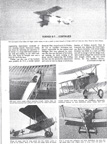
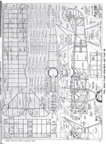
Scale Model Fokker D. VIII
Click to Enlarge
About the Full Size Planes
The SPAD S. XIII
The Fokker D. VII is discussed below
The SPAD S.XIII was a French biplane fighter aircraft of World War I, developed by Société Pour L'Aviation et ses Dérivés (SPAD - might be translated as "Airplanes'R'Us") from the earlier highly successful SPAD S.VII. It was one of the most capable fighters of the war, and one of the most-produced, with 8,472 built and orders for around 10,000 more cancelled at the Armistice.
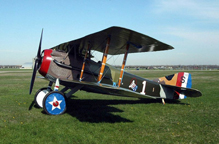
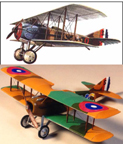
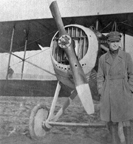
SPAD S. XIII
Georges Guynemer with his SPAD S. XIII
Click to Enlarge
The S.VII had entered service in September of 1916, but was surpassed by the latest German fighters in only a few months. French flying ace, Georges Guynemer began lobbying for an improved version, calling for more speed and more firepower. SPAD designer Louis Béchereau first began to explore arming an airplane with a 37 mm cannon, and produced the S.XII. However, the wight associated with the cannon and engineering requirements needed to make it work resulted in a slower plane that was hard to fly. The only pilot able to master the S. XII did achieve seven victories. It appeared that speed was the most important factor and thuis was botn the S.XIII.
The S.XIII differed from its predecessor by incorporating a number of aerodynamic and other refinements, including larger wings and rudder, a more powerful engine and a second gun. It was faster than its main contemporaries, the British Sopwith Camel and the German Fokker D.VII, and was renowned for its ruggedness and strength in a dive. It had poor maneuvrability, especially at low speeds. It was a difficult aircraft for novice pilots to land safely.
Here is a video of a restored SPAD S. XIII in action:
Click Here for more information about the SPAD S. XIII.
This was a popular Cleveland kit because Eddie Rickenbacker was a war hero and a colorful public figure. (You'll note that Rickenbacker's name is on the box.
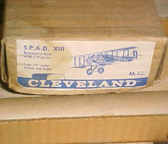
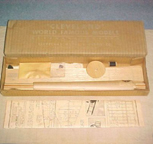
Cleveland Model
Click to Enlarge
You can buy the plans and patterns that will enable you to make this model right now. Click Here to go to the exact location on the Cleveland Website to get them.
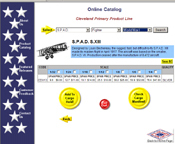
The SPAD S.XIII at the Cleveland Site
Click to Enlarge
Fokker D. VII
The SPAD S. Xiii is covered further above
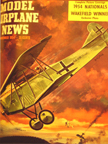
Model Airplane News Cover Art for November, 1954
by Jo Kotula
Click to Enlarge
The Fokker D.VII was a German World War I fighter aircraft designed by Reinhold Platz of the Fokker-Flugzeugwerke (Aircraft Company). Germany produced around 1,700 D.VII aircraft in the summer and autumn of 1918. It was such a formidable aircraft that the Armistice ending the war specifically required Germany to surrender all D.VIIs to the Allies.
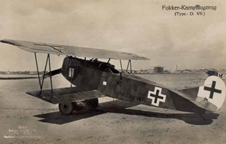
Fokker D-VII
Click to Enlarge
Late in 1917, Fokker built an experimental biplane fitted with the standard Mercedes D.IIIa engine. Upon flying the modified V.11,Manfried von Richthofen (the "Red baron") praised its excellent performance, safety and ease of flying, especially for new pilots. Fokker immediately received a provisional order for 400 production aircraft, which were designated "D.VII" by the German Air Force.
Fokker's factory was not up to the task of supplying the entire air force, so their rivals at Albatros and AEG were directed to build the D.VII under license. Because Fokker did not use production plans for their designs, they simply sent a completed D.VII airframe for Albatros to copy. Albatros paid Fokker a five percent royalty for every D.VII built under license. Ultimately, 1700 models of the D-VII were produced.
I actually built the Cleveland Master KIt for the Fokker D-VII in 1955
When I was a kid in the 1950s,I used to hang out at the athletic field next to St. John's church in Bloomfield. This was not a lovely grass covered area, but rather an oiled dirt playing field. On Sundays, teenagers and men would gather to fly gasoline-powered model airplanes. This was a fascinating experience that captivated me. After some interaction with the modelers, I learned that the Boys Club offered lessons in making models for little kids. So, I started out there. It wasn't long before I heard people talk about the famous "Cleveland Model Airplanes." These were incredibly detailed models that took a high degree of skill to make. They also cost a dollar when the simple kits we made at Boys Club cost a dime. My teachers suggested that I stick to the "kids kits."
This was, of course like waving a red flag at a bull. Back then, my parents were very poor, so asking for a dollar for a model airplane kit that people said I couldn't make was out of the question. I had to hustle a lot to get the dollar. At that time, you could get a nickle if you carried groceries up five flights of stairs. The deal was cinched when I actually found a quarter on the street outside a bar.
I walked into Pop Target's candy store --- for some reason, he stocked a wide variety of model airplane kits --- and plunked down my dollar for the Cleveland Kit, for the Fokker D-VII. I took this back to the Boys Club and worked on it every day for the hour we were alotted. It actually took two years to finish. During that time, I actually got promoted to be one of the "helpers" for new kids. When I finished it, Mr. Ravignoli (the teacher) took a picture of me. He sent the picture to Model Airplane News which was the holy scripture of aircraft fans. The picture and the letter that I received from William Winter are shown below.
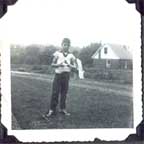
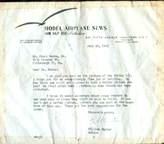
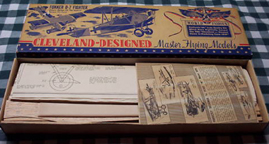
My 1955 Rendition of the Cleveland Fokker D-7 Kit
William Winter was the Dean of Aircraft Modelers at the time
Picture at the right is the Cleveland Master Kit
Click to Enlarge
Click here to learn more about the Fokker D-VII. Below is a fantastic video of a model of a Fokker D-VII in action. It has all the qualities of the real thing. The D-VII has always been an excellent subject for modeling!
In fact, Cleveland made a number of kits for the Fokker D-VII. The most valuable and challenging is the Master Kit.
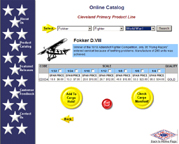
Fokker D-VII on the Cleveland Site
Click to Enlarge
You can buy the plans and patterns that will enable you to make this model right now. Click Here to go to the exact location on the Cleveland Website to get them.
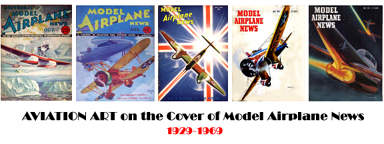
Click to go back and select another cover.
Counter for the Entire Site (not just this page..)
Home | About Lindy | Last Week's Reviews | Upcoming Events | 1940s Collecibles
The Guide - Establishments - Travel - Accessories
Music | Links | Photo Gallery | Extras | Contact